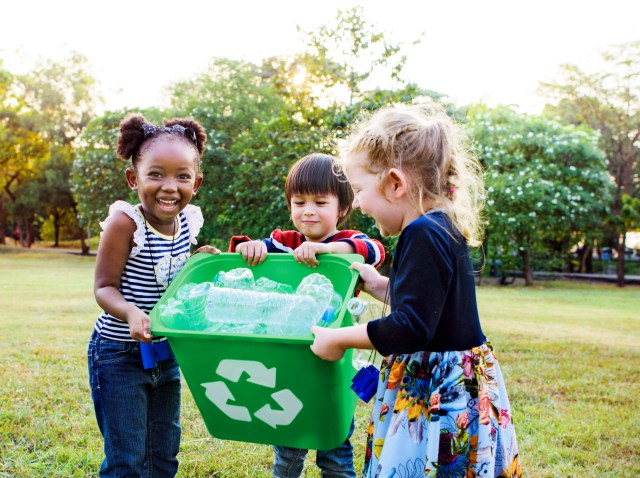
The statistics on how we’ve treated the planet up to this point are pretty bleak. Only 9 percent of the plastic ever produced has been recycled, and each year, 8 million tons of plastic pollute the ocean.
While the problem at hand is massive, it’s easy for kids to get involved because even the smallest sustainable action helps to make a collective difference. I’ve learned through experience with my own son that it’s best to keep it simple, focusing on the three Rs: Reduce, Reuse and Recycle.
Reduce
Children always gravitate to the newest and coolest toys, fashion or food, but the conspicuous consumption Americans are known for is not good for the planet. Instead, try and instill the belief that less is more and quality trumps quantity.
Reinforce reducing consumption and making smarter choices with a quick trip to the grocery store. Teach your kids how to choose items with the least amount of packaging, shop in the bulk foods section, avoid single-serving foods and bring cloth shopping bags to haul it all home in.
Your house is the ideal place to demonstrate energy and water-saving behaviors to your kids. By modeling turning off lights when you leave a room, turning off appliances not in use, unplugging appliances not often used and taking short showers, you’ll help instill an attitude of conservation early.
Reuse
Upcycling is definitely a trend these days, so it should be easy to get kids, tweens and teens on board. The goal is to show kids that not everything needs to be thrown away. Before throwing away a toy, or perhaps clothes, examine it to see if it can be fixed or mended. If it can, teach your child how to make the fix so they can learn important new skills. With clothes and toys that your child has outgrown, engage them in collecting everything and donating it to a charitable organization. Not only are they learning how to reuse, but they’re also learning the importance of philanthropy. When you do need new clothes for the kids, consider shopping at a local consignment store rather than the mall.
Single-serve plastic items are some of the most destructive consumer goods on the market, but you can cut down on your consumption by using refillables whenever possible. Invest in decorative refillable soap dispensers for the home and make sure everyone in the family has a reusable water bottle. Disposable paper products are also incredibly wasteful. Limit your use of paper towels, plates and napkins, opting for cloth and ceramic options instead.
Since it’s impossible to limit using all of these things, teach kids how to make the most of a product. If you do use paper products, use the cardboard tubes and boxes for art projects. When printing at home or coloring, make sure to teach kids to use both sides of the paper.
Recycle
Recycling materials that can be reused is key to sustainability. Have bins at home to collect glass, plastic and paper that can be recycled. If your community already recycles, it’s easy, but if not, consider working with your kids to start a recycling drive in your community. It’s also important to note that not all items are recyclable, even if they appear to be, and not all states and cities have the same recycling practices. To best understand your city’s recycling rules, I recommend checking your local government website.
In addition to recycling, point out to your kids which of their favorite products are made from recycled materials.
There’s no better time than Earth Day to show kids that creating a sustainable planet starts at the grass-roots level. By getting the next generation excited about keeping the Earth healthy for years to come, we’re ensuring many more Earth Days in the future.
feature image via iStock











